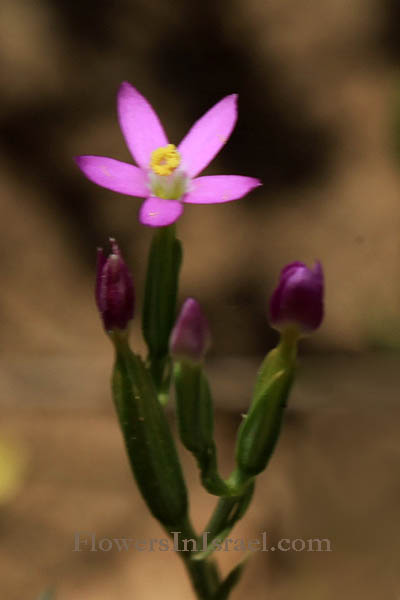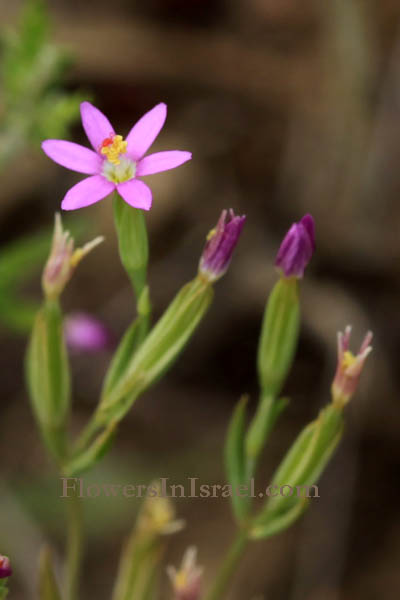Branched centaury, Slender centaury,
Hebrew: ערבז דק-פרחים, Arabic: قنطريون دقيق الزهر
| Scientific name: | Centaurium tenuiflorum (Hoffmennsegg & Link) Fritsch | |
| Synonym name: | Centaurium umbellatum Gilib. | |
| Common name: | Branched centaury, Slender centaury | |
| Hebrew name: | ערבז דק-פרחים | |
| Arabic name: | قنطريون دقيق الزهر | |
| Plant Family: | Gentianaceae, ערבזיים |

Location: Bene Zion Nature Reserve |
| Life form: | Therophyte, annual | |
| Stems: | 15-50 cm in height; branched densely from base or middle | |
| Leaves: | Opposite, entire, smooth | |
| Flowers: | Pink | |
| Fruits / pods: | Capsule; seeds numerous, reticulate, minute | |
| Flowering Period: | April, May | |
| Habitat: | Batha, Phrygana, Humid habitats | |
| Distribution: | Mediterranean Woodlands and Shrublands, Semi-steppe shrublands, Shrub-steppes, Deserts and extreme deserts | |
| Chorotype: | Med - Irano-Turanian | |
| Summer shedding: | Ephemeral |

Location: Bene Zion Nature Reserve Derivation of the botanical name: Centaurea, gets its name from the centaur, Chiron, who is said in mythology to have taught us the healing power of herbs. tenuiflorum, with slender flowers. The Hebrew word: ערבז, arbaz is named by Immanuel Löw (1854 – 1944), a Hungarian rabbi, scholar and politician, following the name of the plant in the Syrian language, in his book "The Flora of the Jews".

Location: Bene Zion Nature Reserve |